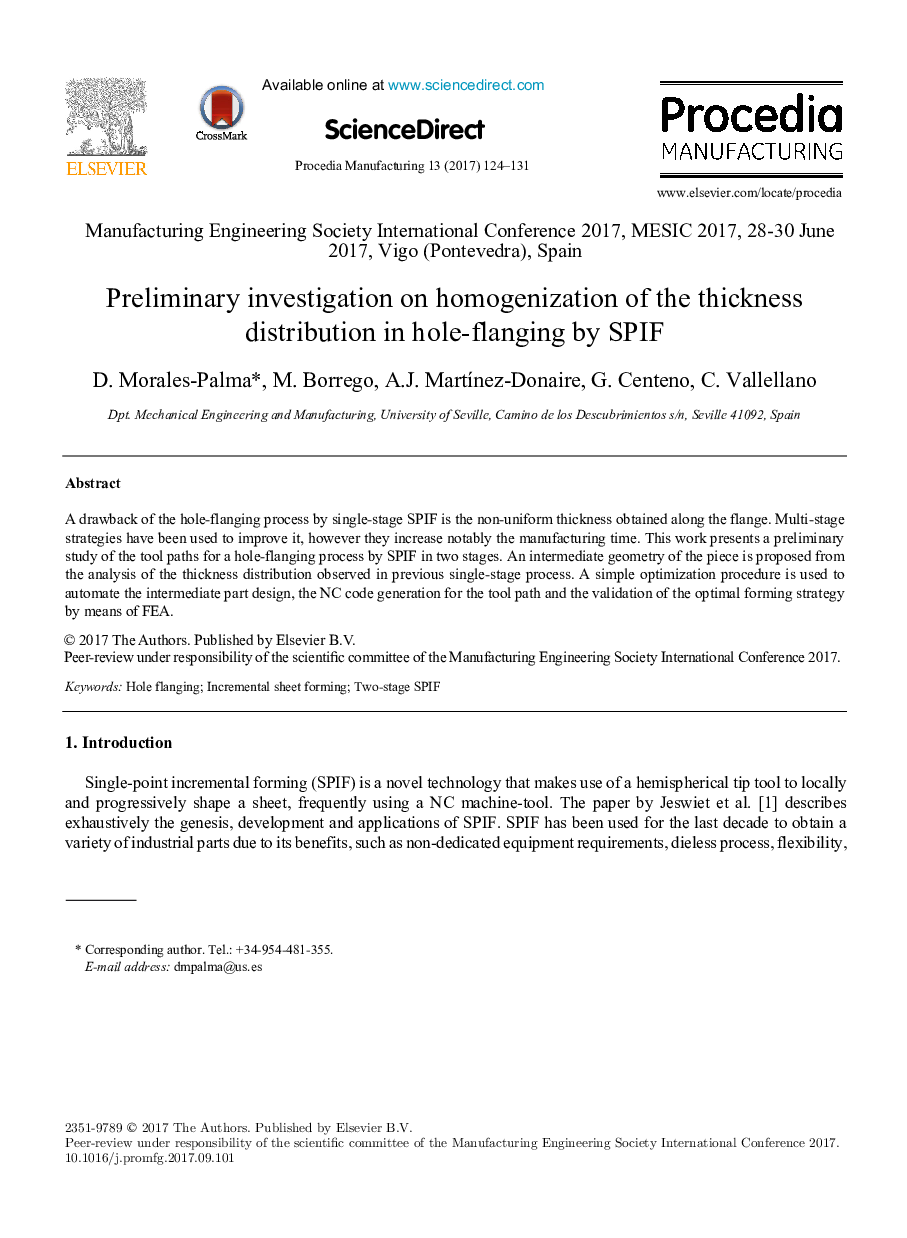| Article ID | Journal | Published Year | Pages | File Type |
|---|---|---|---|---|
| 5128519 | Procedia Manufacturing | 2017 | 8 Pages |
Abstract
A drawback of the hole-flanging process by single-stage SPIF is the non-uniform thickness obtained along the flange. Multi-stage strategies have been used to improve it, however they increase notably the manufacturing time. This work presents a preliminary study of the tool paths for a hole-flanging process by SPIF in two stages. An intermediate geometry of the piece is proposed from the analysis of the thickness distribution observed in previous single-stage process. A simple optimization procedure is used to automate the intermediate part design, the NC code generation for the tool path and the validation of the optimal forming strategy by means of FEA.
Related Topics
Physical Sciences and Engineering
Engineering
Industrial and Manufacturing Engineering
Authors
D. Morales-Palma, M. Borrego, A.J. MartÃnez-Donaire, G. Centeno, C. Vallellano,
